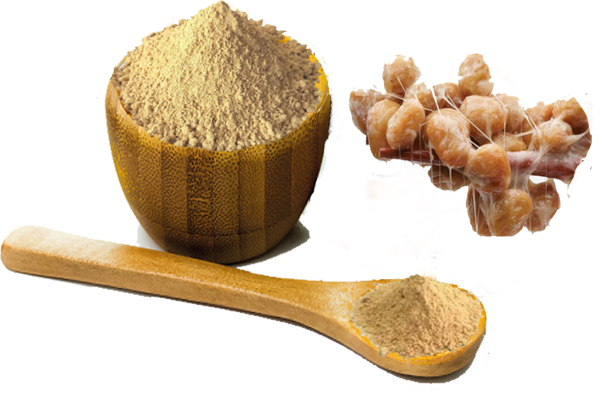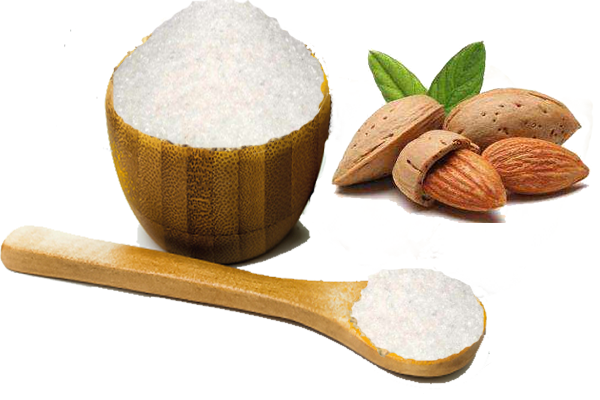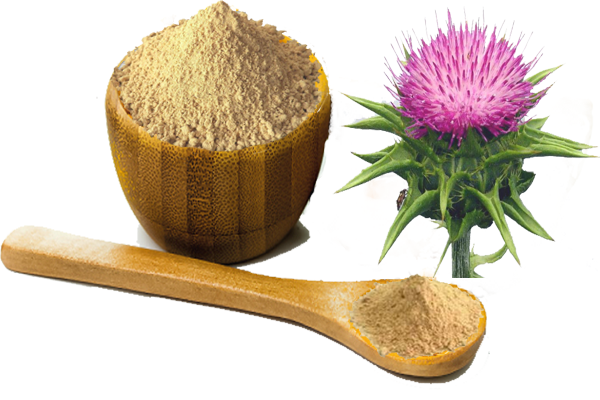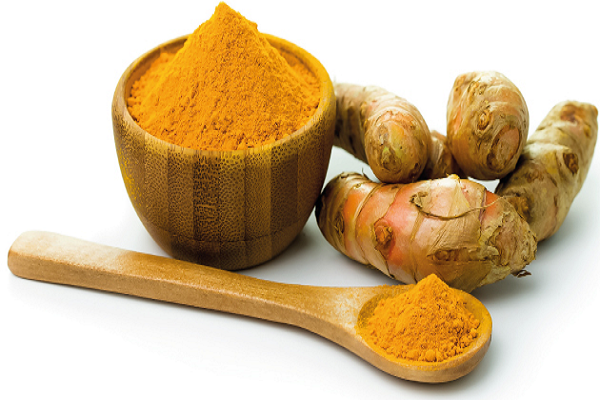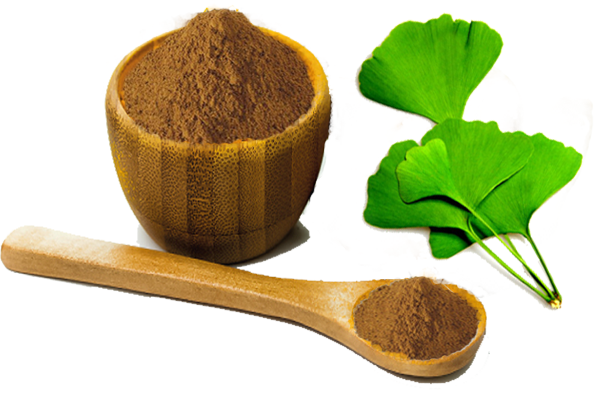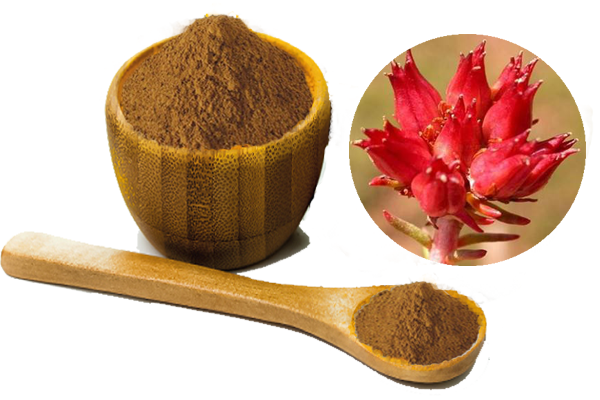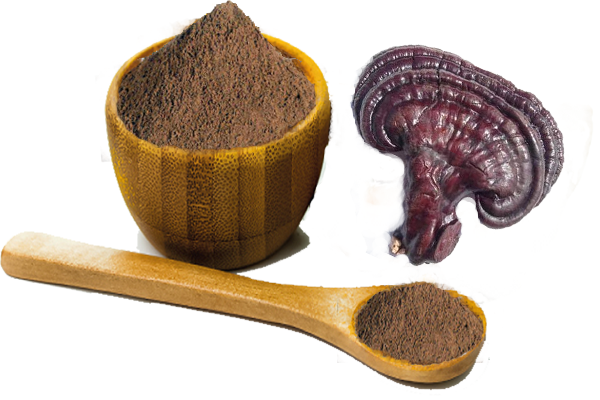
Nattokinase
Nattokinase
MIGU supplied Nattokinase with 2000Fu, 5000Fu, 10000Fu, 20000Fu, 30000Fu until to 50.0000 Fu for a natural effective medication in Potent Thrombolytic Activity and other Cardiovascular diseases related
Nattokinase (NK) is not getting from any known kinases, NK is a serine protease purified and extracted from Bacillus subtilis natto (a food with cheese-like flavor made of fermented soybeans with the bacterium Bacillus subtilis,popular in Asia countries more than 2000 years as a traditional foods especially in Japan.) This is not only said this kind of enzyme found in natto nor is natto only original of the bioactive enzymes, but the nattokinase source to be many welcomed enzyme extracted from fermented foods. The enzyme traditionally known and named as nattokinase ( the boiled soybeans fermentated by Bacillus subtilis ), but the enzyme is related with the becterin fermented than the food products ( despite being named after natto.) Other enzymes extract from the bacteria Bacillus subtilis may also be referred to as nattokinases. Actally the nattokinase is a fairly large protein enzyme belongs to the family of serine protease,structurally related to the subtilisin class of enzymes. It also named as NSK-SD, NKCP(1), or Orokinase.
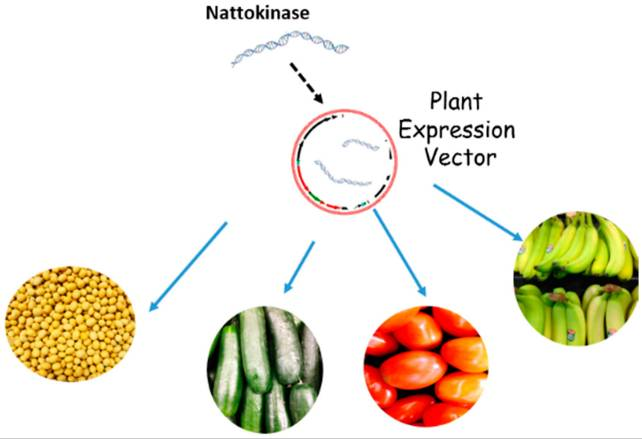
The origin of Nattokinase
Ours MIGU‘s Unique Nattokinase
Traditional nattokinase mainly gettering from the bacterium Bacillus subtilis fermented soybeans for years. Usually contains the Vitamin K2, soy isoflavone, soy protein tissue and purine which will cause the ventilation. More important some soy material is related to the GMO material. In order to get high purity of nattolinase with no those side effects ingredients involve. Our company works closely with Tsinghua University, Royal Swedish Academy of Life Sciences, JiangSu University and other reserch institutes to independently develop and compelet the world’s first mass production line of kidney bean. Our team take mainly for the material of white kidney bean, red kidney bean, black kidney bean instead the traditional soybean with the bacterium Baccillus Subtilis fermented which get the enzyme bioactivity reaches 200000 U/g.
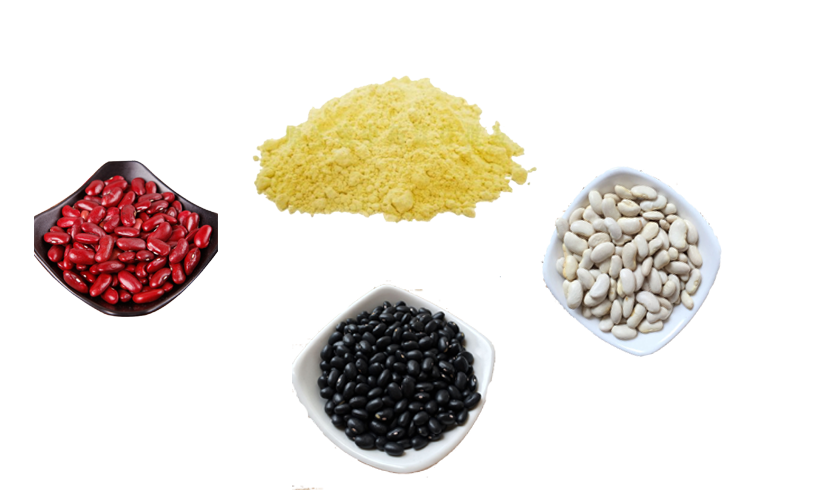
Kidney beans source for Nattokinase
The History for discovery of Nattokinase
Soybean fermented food been popular and used as a traditional food for thousands of years in Japan. Until to 1980, the Nattokinase is firstly discovered by Dr Hiroyuki Sumi, a Japanese researcher at the Chicago University Medical School. In his long researched thrombolytic enzymes, Dr Sumi is try searching for a natural agent which not only can help dissolve thrombus but also for the cardiac and cerebral infarction (blood clots associated with heart attacks and stroke). After he complied and testing over 173 different natural foods with their blood-clotting capacity found when he adding the bacteria Bacillus fermented natto with a 37 degree centigrade into the artificial thrombus (fibrin) in a Petri dish. It found thrombus in the natto were dissolved gradually and completely disappread within 18 hours. Dr Sumi named this found unique enzyme as the name of ” nattokinase” means ” enzyme in natto”. In this research, Dr sumi written that nattokinase not only help body’s normal blood-clotting mechanism, but also supports the healthy blood viscosity and guarantee overall cardiovascular health. Showed “a potency matched by no other enzyme.”
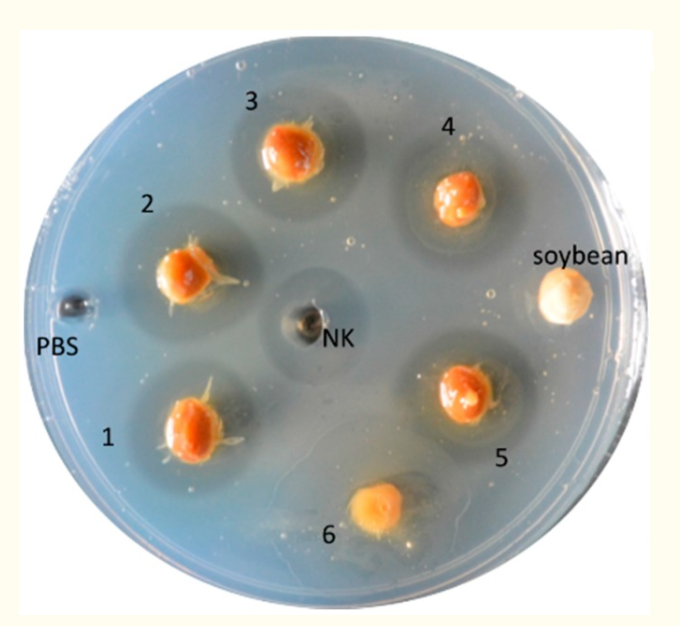
Natto and nattokinase can dissolve fibrin (semi-transparent halo ring). (1–5) Natto-fermented soy beans; (6) Slimy material characteristic of natto; (NK) Commercial nattokinase (100 µg) as a positive control; Non-fermented soybean and PBS (phosphate buffered saline) as negative controls.
After years, more research research work like 17 studies publied in Janpan and US has been conducted. Deeply and scitific to certified that nattokinase supports your body’s normal blood-clotting mechanism and helps to maintain healthy blood flow.
Structure and Properties of Nattokinase
The molecular weight of nattokinase approximately 20,000-27,728 Da and the isoelectric point (pI) reach 8.6-8.7.(2)(3) It is a serine protease which inhibited totally by Neguvon and DFP.(2) In its structure includes 275 amino acids and owned with subtilisins for structural homology ( 70% homology withsubtilisin DY, (3)69% subtilisin Carlsberg, 85% subtilisin BPN) espeically in the binding pocket to reach 99% homology in catalytic domain and 90% homology fairly. (4)
In the room temperature, it is stable with 10 minutes and PH 6-12. But PH 5 is labile in isolation. Its stability can be increased combined with the serum albumin, gastric mucin, boilded food products like meat and rice. So that in acidic conditions no more than 7.5% activity. (2) (3) In the 40°C with 30 minutes incubation will not abolish the activity effect of nattokinase (3). But for 1 hour in 60°C the enzyme are totally deactivate suffient. And its fibrinolytic activity will be deactivation and lost complete.
In the stomach’s PH(1.2), the enzyme ( be isolated) can fully deactivated within one hour. (5)(7). When the fibrinolytic effects of nattokinase are lost efficacy, but not totally abolish( the destroyed enzyme may derived some bioactive peptides who have usage for controlling the blood pressure) (6)
In order to highly using nattokinase enzyme in isolation and resistance to acidic conditions, coating a methacrylic acid–ethyl acrylate copolymer(8) or high molecular weight Na-γ-PGA. (5)capsules can be achieved which makes great effective(7)
Analysis of the Nattokinase Gene and Protein
Nattokinase is encoded by the aprN gene, which was first cloned and sequenced from B. subtilis (natto) (9). The full length polypeptide contains a 29-residue signal peptide which directs protein secretion through the cell membrane, and a 77-residue propeptide which plays a crucial role as an intramolecular chaperone during the protein folding process; resulting in a 275-residue, mature and functional NK peptide. The partial length of aprN gene is 0.8 kb in length (Figure 5A) and the mature peptide has a molecular weight of 27.7 kDa (Figure 5B). Since the amino acid sequence of NK is almost identical (99.3% homologous) to Subtilisin E, NK was also considered as a member of the subtilisin serine protease family. Unlike subtilisin, however, NK has a very specific affinity for fibrin degradation (10). The D32-H64-S221motif and N155 function as the catalytic triad and oxyanion hole of NK, respectively(11,12). These sites are critical for the protease hydrolysis process. Based on the crystal structure of Subtilisin E, a 3D structural model of NK was constructed (11). It indicated that the overall active centers are negatively charged, suggesting that NK is more specific for positive-charged substrates. 3D model predicted that the mechanism of NK was induced by attacking of hydroxyl rich in catalytic environment and locating of S221(11). Site-directed mutagenesis and molecular dynamics simulation of a 3D model revealed that hydrogen bonds formed between residues, S33, D60, S62, and T220 stabilize the transition state of the hydrolysis reaction. S125, L126, and G127 serve as substrate binding sites. Three residues of S3 binding sites, G100, S101, and L126 are responsible for fibrinolytic activity while they moderately affected substrate specificity (13).

Figure 5
NK gene product and insoluble (inclusion-body) NK protein in Escherichia coli. (A) PCR-derived NK gene product from B. subtilis (natto); (B) Lane 1: NK protein present in crude medium extract; Lane 2 and 3: NK protein purified using a Ni-NTA (nickel-charged affinity nitrilotriacetic acid) column.
In addition to B. subtilis strains, researchers have isolated NK from marine organisms (14) and Pseudomonas sp. (15). Sixteen NK gene sequences have been identified from various B. subtilis strains and their sequences are available in the NCBI GenBank. Amino acid sequence alignment of mature NKs demonstrates that they are highly homologous to each other; with some of the protein sequences possessing 100% identity. For example, the amino acid sequence of AF368283.1 and JF921199.1 are 100% identical. In addition, JN302072 and EF20828.1 also share the same amino acid sequences (Figure 6).

Figure 6
Phylogeny of NK sequences. Predicted NK protein sequences were generated using DNA to PROTEIN software (available at: http://web.expasy.org/translate/). Sequence analysis, multiple sequence alignment, and phylogenetic analysis were conducted using ClustalW2 (available at: http://www.ebi.ac.uk/Tools/msa/clustalw2/) software. A total of 16 NK gene sequences were deposited in the NCBI Genbank. Fifteen mature protein sequences were subjected to a phylogenetic analysis. HM068963.1 is only represented by a partial sequence and as a result, was not included in the phylogenetic analysis.
Pharmaceutical Researches and Studies on Nattokinase
Summarised and reviewing below picture for the mechanisms action and pharmacologic effects of Nattokinase: fibrinolytic/antithrombotic effects, anti-atherosclerotic and lipid-lowering effects, antihypertensive effects, antiplatelet/anticoagulant effects, and neuroprotective actions as summarised in Figure 1( Pharmacologic actions of nattokinase as related to cardiovascular health and disease.).
Potent fibrinolytic/antithrombotic effects of NK
Dr Sumi discovered and named ” Nattokinase” as a natural antithrombolytic action agent in 1980. More research and human studies reported its great antithrombolytic action of NK until now. In vitro and in animal models, amount of study to evaluate the thrombolytic effects. In addition, in a model of rat experimental pulmonary thrombosis, oral administration of NK led to a decrease in thrombus count and plasma euglobulin lysis time (ELT), as well as an increase in tissue plasminogen activator (tPA), indicating that NK is capable of activating plasma fibrinolysis in vivo.Omura et al further found that a purified protein layer, NKCP, which mainly consisted of NK, had both fibrinolytic and antithrombotic effects, which they described as being similar to that of heparin. In rats, Natto treatment shortened ELT and significantly prolonged partial thromboplastin time compared with a nontreated rat group.
From human studies data also potent certified the NK as an effective and promising fibrinolytic agent. In the human trial and clinica trial, oral administration of NK to the healthy adult volunteers shown the ELT reduced quickly and tPA aactivity increased significantly (P < .05). And in Hsia’s clinical trial study also supported NK can reduce the risk thrombosis and CVD in humans as a useful fibrinolytic/anticoagulant agent.
Like the ischaemic heart disease, ischaemic stroke, and venous thromboembolis all these belongs to the thrombosis as a common pathology. Almost the myocardial infarction, cerebral infarction and maybe in massive pulmonary embolism used in the therapy of thromboliytic/fibrinolytic. This kind of fibrinolytic therapy can help lower the death rate in many cases. In recently years, more and more use such treatments. Because compared with the plasminogen activators, streptokinase, and anisoylated plasminogen streptokinase-activator complex these commerical thrombolytic agents usually accompanied by serious drawbacks and adverse effects. Meantime, these agents drugs are very expensive, have a short half-life after intravenous administration, and lead to uncontrollable acceleration of fibrinolysis and haemorrhaging. In order to overcome these risks, the NK is needed as a safer thrombolytic agent.
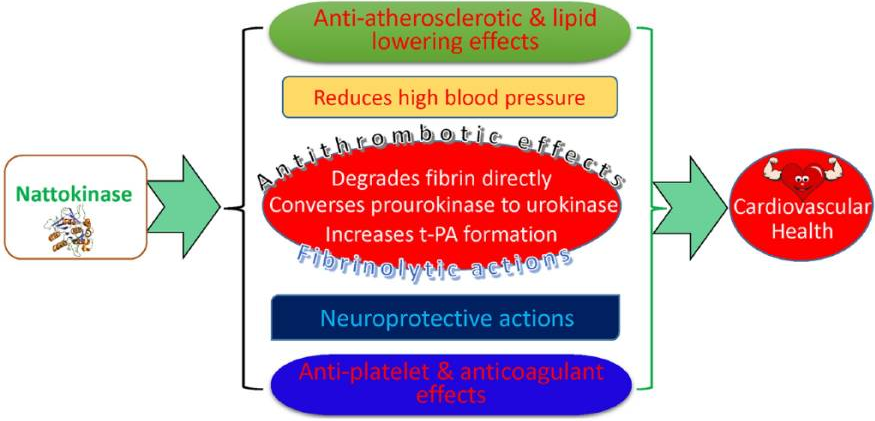
mainly effective for nattokinase
Anti-atherosclerotic and lipid-lowering effects of NK
Heart disease and stroke mainly caused by atherosclerosis which are the underlying pathological change of CVDs. So these functional drugs who have strongly effect in anti-atherosclerotic have broad clinical significance. But difficult to get these kind of drugs. The nattokanise discovered have a great significant as one of those drugs in anti-atherosclerotic and lipid-lowering effects
Some animal studies using NK as an antiatherogenic drug have shown that natto extract in the diet inhibits intimal thickening in mice compared to the control group.The inhibition of intimal thickening after vascular injury can be attributed to the enhanced thrombolytic activity of NK.10.
Compared the control group and feeding Natto Group which the animal is feed Natto or Natto extract before injury, there is a significant different in intimal thickening for the feeding group’s intimal thickening were suppressed in arts.Dr Chang think this effect of natto extract attributed to its antioxidant and antiapoptotic properties and other study demonstrated because of NK’s antioxidant effect to prevent the arteriosclerosis and reducing lipid peroxidation and imrpoving lipid metabolism( inhibiting the oxidation of low-density lipoprotein and low-density lipoprotein). In the diet-fed rabbits group found the NK combined with red ginseng can reduce the aortic plaque area in the high cholesterol.
In recen clinical study, the patients of atherosclerosis take NK supplementation daily can make a effective function to suppress the progression of atherosclerotic plaques. .In 26 weeks NK treatment, the CCA intima-media thickness (CCA-IMT) and carotid plaque size have a significant reduction. In the result, the size of carotid plaque and CCA-IMT reduced from 0.25 ± 0.12 cm2 to 0.16 ± 0.10 cm2 and from 1.13 ± 0.12 mm to 1.01 ± 0.11 mm independently。 Compared with the group of treating with simvastatin( 20mg dosage daily), the NK group(P < .01) reduction is more significant. From the data get the NK is better and successful to replace the statins and used in the function of reducing atherosclerosis in future. And a good therapy for cardiovascular attack and stroke in patients.
Early studies mainly found and known the NK can increase thrombolytic activity but not known ist suppresses atherosclerosis mechanisms. . For the study data said the group effect of the combination of antioxidant, antithrombotic, anticoagulant, and lipid-lowering from NK is make the effect for anti-atherosclerotic.
NK also have a great effect on lipids. Studies from many laboratories showed that the serum triglycerides, total cholesterol, and LDL cholesterol (LDL-C) levels increased can be reduced significantly by NK with a great hypolipidaemic effect. In our studies, the patients who is hyperlipidaemia take 26 weeks NK with 6500 FU, the total cholesterol, LDL-C, and triglycerides reduced. And NK can increase levels of HDL cholesterol (hdl-c). In different animal study, researchers observed the hypolipidaemic effects action of NK maybe required its higher doseage and long-time treatments.
Antihypertensive effects of NK
Natto Extract also have discovered another function for lowering blood pressure. From the vitro study discovered an important enzyme, angiotensin II as a strong inhibitors to produce the hypertension peptide hormone suppress angiotensin-converting enzyme (ACE) in the renin-angiotensin system.
In 2008 study, Kim et al make a trail to study the effects of NK supplements on prehypertension or hypertensive patients through the first randomized double-blind placebo-controlled trial to analysis. From this conduct, the sysolic and diastolic BP both reducing by taking 8 weeks NK daily, showing the NK is significantly for hypertension treatment. From the Jensn et al study also show the patients in hypertension had changed and prevented the blood pressure after oral administration for 8 weeks NK. Others studies in spontaneously hypertensive rat, the laboratory conducted benifical effective reduction of the blood pressure after taking NK
Compared with the bad side effects for the long time use of antihypertensive drugs, NK can be successful natural agent to be the treatment hypertension by beneficial effective the CVD.
Antiplatelet/anticoagulant effects of NK
To be the prevent the heart disease, stroke and arterial thrombosis drug, aspirin as an effective anticoagulant is widely used now ( administrition 80-100mg daily). Aspirin inhibits the anti-platelet effect of cyclooxygenase (COX) by its antiplatelet effective and then reduces the synthesis of thrombotic thrombosis (TXA2) in platelets. But long time use aspirin makes many serious side effect like gastrointestinal (GI) and hemorrhage. From the study to compare the Aspirin and NK’s antiplatelet effects, the NK show a great effective activities for antiplatelet and antithrombotic. And the collagen-activated platelets inhibited thromboxane B2 formation.
More seriouis study show that NK can be a great replacer even more better than aspirin without any side effects to improved blood flow.
Neuroprotective effects of NK
The ability of nattokinase to hydrolyze amyloid at neutral pH and normal hypothermia suggests a role in the treatment of amyloid diseases such as alzheimer’s disease (AD).Oral NK has positive effects on the regulation of specific factors in AD pathway in AD rat model )In the cognitive dysfunction model of AD rats caused by colchicine intoxication, nano-trophic drugs containing NK can enhance the impaired learning and memory ability, and are effective inhibitors to inhibit the activity of amyloidosis and BACE-1, thus suggesting the presence of nerves and the protective effect of NK.
Cardiovascular health is closely related to brain health. There is a strong cause-and-effect relationship between CVD risk factors and the incidence of cognitive decline and AD,therefore, the neuroprotective effect of the drug used in patients with CVD has great potential and is conducive to the overall prognosis of patients. Although more than 100 neuroprotectants have shown neuroprotective effects on focal ischemic stroke in recent preclinical studies, none of them have been shown to be beneficial in clinical studies. As a result, there is an urgent need for more effective drugs to treat cerebrovascular diseases such as ischemic heart disease and stroke, which have proven neuroprotective.
Clinical Human Studies of NK
In recently years, NK as a candidate for CVD become popular but its clinical research is relativly limited on NK. In the 1990, NK first clinical study analyze to evaluate its effective for fibrinolytic activity after taking orally. In Japanese study the effect of NK on stroke prevention in acute ischaemic strok patients and discovered great effects for patients after taking orally. For NK or natto fermented extract clinical studies including its use published no more than 10 studies. And others related NK studies for its benifical effectives like antihypertensive researching in Asia and North America. Also include further studies for its lipid-lowering, antiatherosclerotic, fibrinolytic activity and etc in humans. Maybe not be registered as a drug make the lower clinical studies published for NK. But as a supplement, its significantly effective in human health is remarkable and approved.
Need to know, a team study for the NK by University of Southern California titled“Nattokinase Atherothrombotic Prevention Study” (NCT02080520) by were dated and publised by clinical.gov ( www.clinicaltrials.gov) which be recogniczed the large phase ii clinical trials. Other 10 clinical trials included in clinical.gov
Drug-Nutrient Interactions
1. Red Yeast Extract
One study used two group: one is taking Nattokinase (200mg/7000FU) daily and one group take Red Yeast Extract ( 1200mg) daily combined Nattokinase in divided doses for the patients who treatment for hyperlipemia fails in 6 months. From the results to see any efficacy of nattokinase was shown on the serum platelet, and combination therapy was effective for LDL-C and total cholesterol (because Red Yease Extract itself was effective and there was noRed Yease Extract in the isolation group). Uric acid associated with combination therapy appeared to decrease (10.8 percent), but significant differences in this parameter were noted at baseline.
2.Streptomyces omiyaensis
A study evaluating other fibrinolytic enzymes found that adding one of the 0-100ng/uL Streptomyces albicans (bacteria) to the 100ng/uL nattokinase did not interfere with the fibrinolytic activity of natto kinase. 5ng/UL can increase the activity of natto kinase by 4 times and have synergistic effect.In reducing blood coagulation, Streptomyces byproducts may play a synergistic role with natto kinase. This synergy has not been fully studied.
Concluding for NK
NK is highly popular natural angent with more safely, low cost, easy getting and taking, no side effect compared the traditional drugs in antithrombotic and antihypertensive. In the treatment the thrombotic disorders or CVDs, the Nattokanise is supported the new alternative drug. There are still limitation for nattokanise although many study and clinical researches have support and certified the effctives. However, the great effective and clinical trails push more study and researches to examine and certified the NK as a natural agent to aspirin, tPA, warfarin, or an updated anticoagulants in treatment of CVD. We wish there is one day the NK can be fully be the medicaiton drugs to help management of CVD which patients in CVD only need take 1 pills of NK instead taking aspirin, tPA, warfarin, statins so many drugs with no side effectivies.
There are also some obstacles which need to overcome for NK as the drug or candidate drugs for management CVDs. These obstacles include establelished the evidence for pharmacokinetic evidence of human absorption and metabolism in human body of NK and extensive research is needed to clarify this potential drug interactions between NK and other cardiovascular drugs, which are commonly and simultaneously used to prevent, treat and manage CVD in affected patients.
Reference:
- Omura K, et al. A newly derived protein from Bacillus subtilis natto with both antithrombotic and fibrinolytic effects. J Pharmacol Sci. (2005)
- Sumi H, et al. A novel fibrinolytic enzyme (nattokinase) in the vegetable cheese Natto; a typical and popular soybean food in the Japanese diet.Experientia. (1987)
- Fujita M, et al. Purification and characterization of a strong fibrinolytic enzyme (nattokinase) in the vegetable cheese natto, a popular soybean fermented food in Japan. Biochem Biophys Res Commun. (1993)
- Zheng ZL, et al. Construction of a 3D model of nattokinase, a novel fibrinolytic enzyme from Bacillus natto. A novel nucleophilic catalytic mechanism for nattokinase. J Mol Graph Model. (2005)
- Improvement of the stability of nattokinase using γ-polyglutamic acid as a coating material for microencapsulation.
- Yatagai C, et al. Nattokinase-promoted tissue plasminogen activator release from human cells. Pathophysiol Haemost Thromb. (2008)
- Law D, Zhang Z. Stabilization and target delivery of Nattokinase using compression coating. Drug Dev Ind Pharm. (2007)
- Wei X, et al. Strain screening, fermentation, separation, and encapsulation for production of nattokinase functional food. Appl Biochem Biotechnol. (2012)
-
Zheng Z.-L., Zuo Z.-Y., Liu Z.-G., Tsai K.-C., Liu A.-F., Zou G.-L. Construction of a 3D model of nattokinase, a novel fibrinolytic enzyme from Bacillus natto: A novel nucleophilic catalytic mechanism for nattokinase. J. Mol. Graph. Model. 2005;23:373–380. doi: 10.1016/j.jmgm.2004.10.002. [PubMed][Cross Ref]
-
Zheng Z.-L., Ye M.-Q., Zuo Z.-Y., Liu Z.-G., Tai K.-C., Zou G.-L. Probing the importance of hydrogen bonds in the active site of the subtilisin nattokinase by site-directed mutagenesis and molecular dynamics simulation. Biochem. J. 2006;395:509–515. doi: 10.1042/BJ20050772. [PMC free article] [PubMed][Cross Ref]
-
Chandrasekaran S.D., Vaithilingam M., Shanker R., Kumar S., Thiyur S., Babu V., Selvakumar J.N., Prakash S. Exploring the in vitro thrombolytic activity of nattokinase from a New Strain Pseudomonas aeruginosaCMSS. Jundishapur J. Microbiol. 2015;8:e23567. doi: 10.5812/jjm.23567. [PMC free article] [PubMed][Cross Ref]

